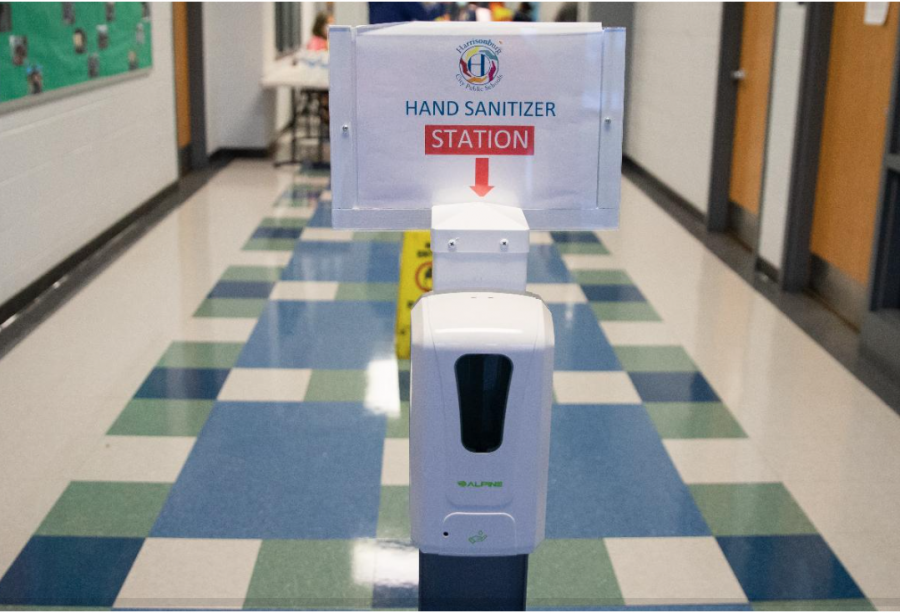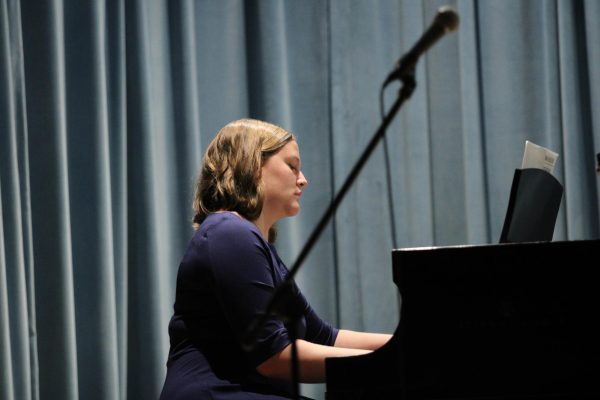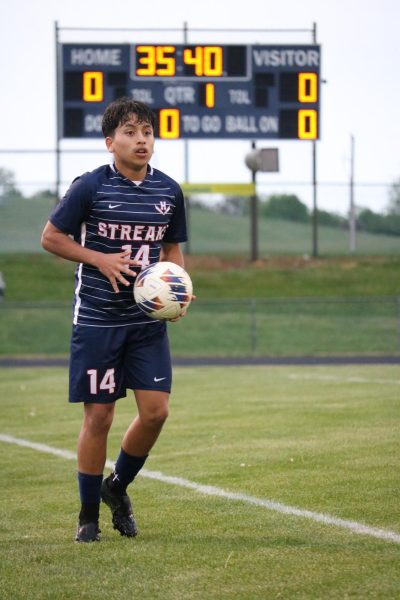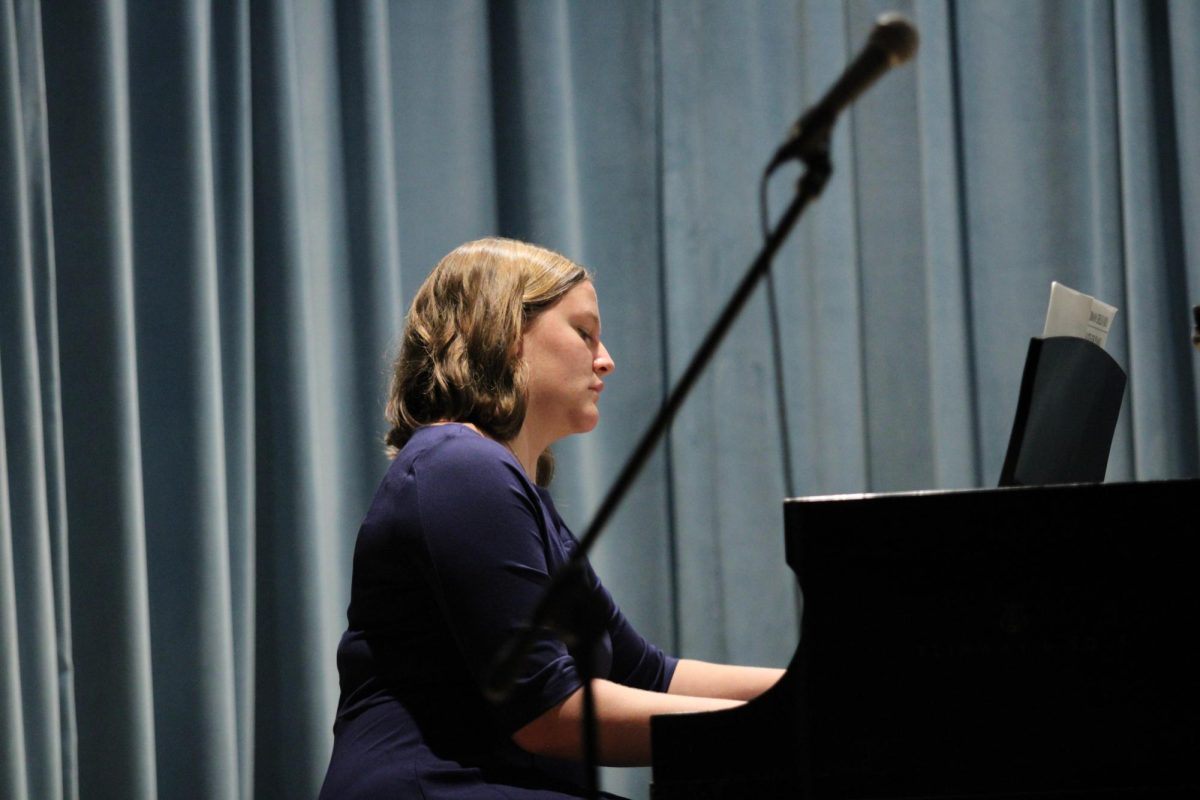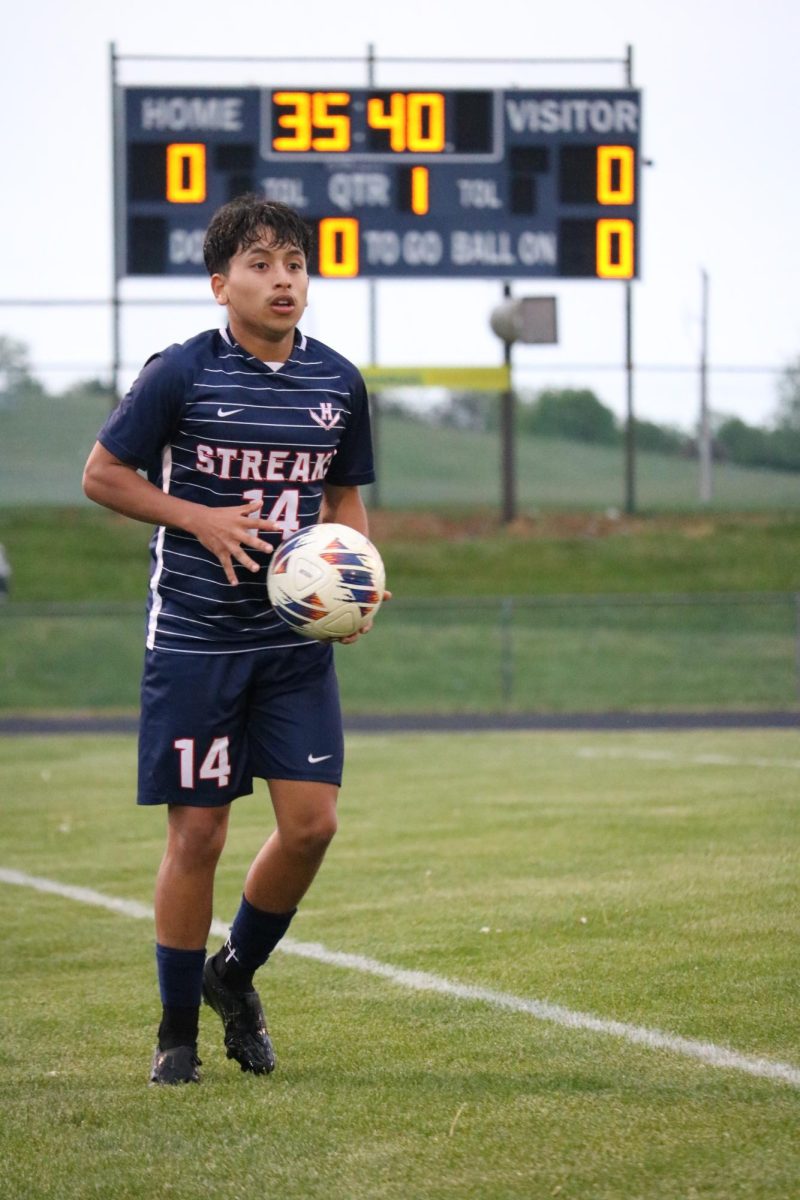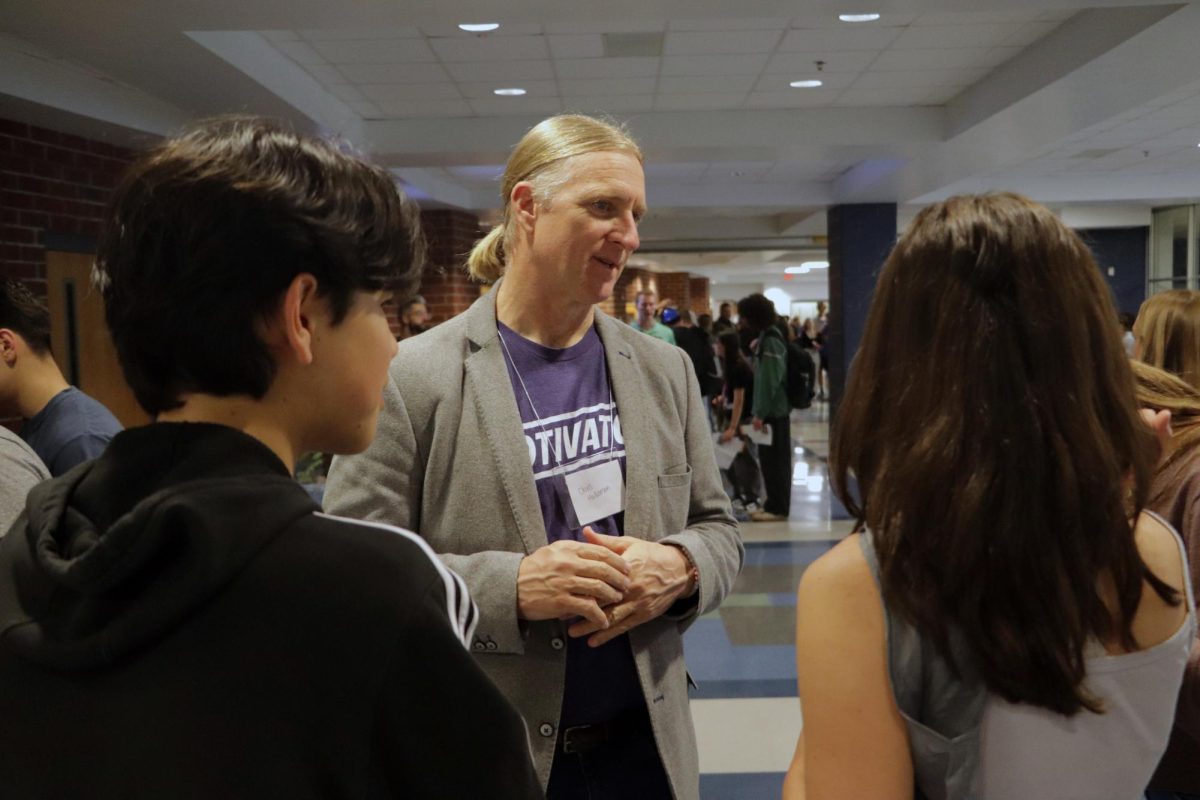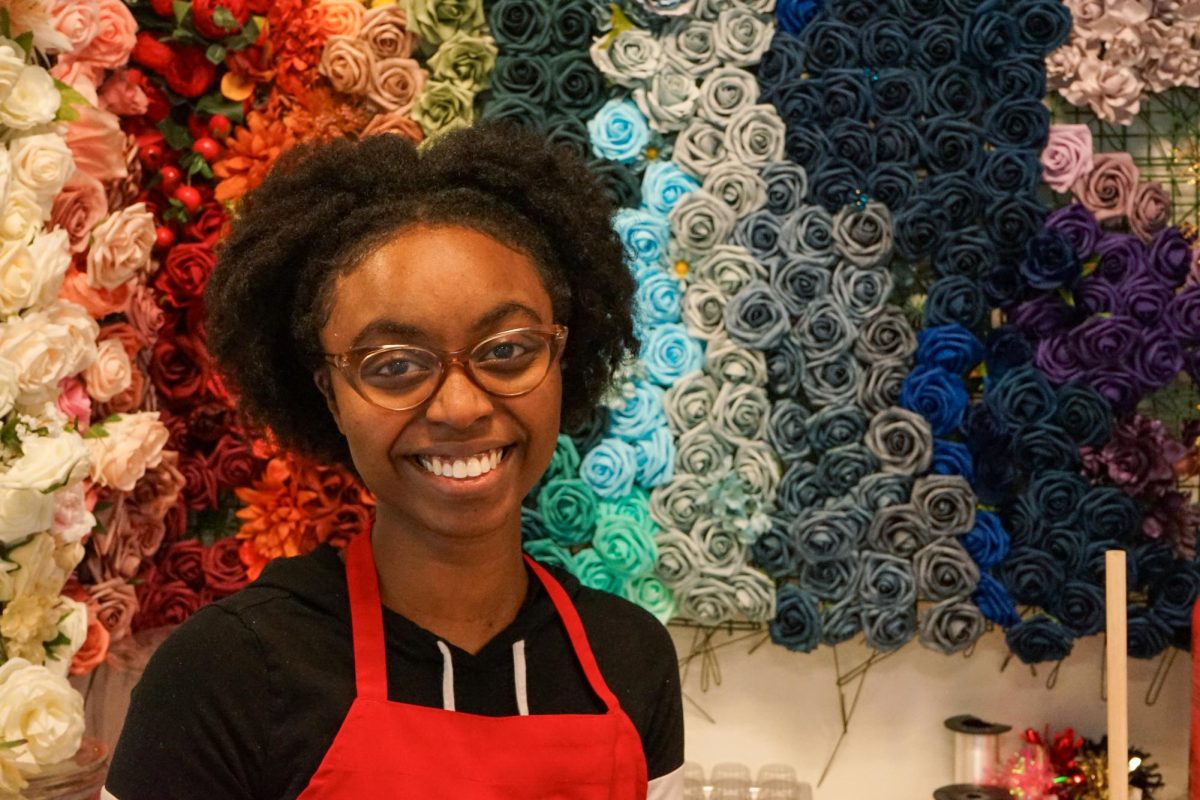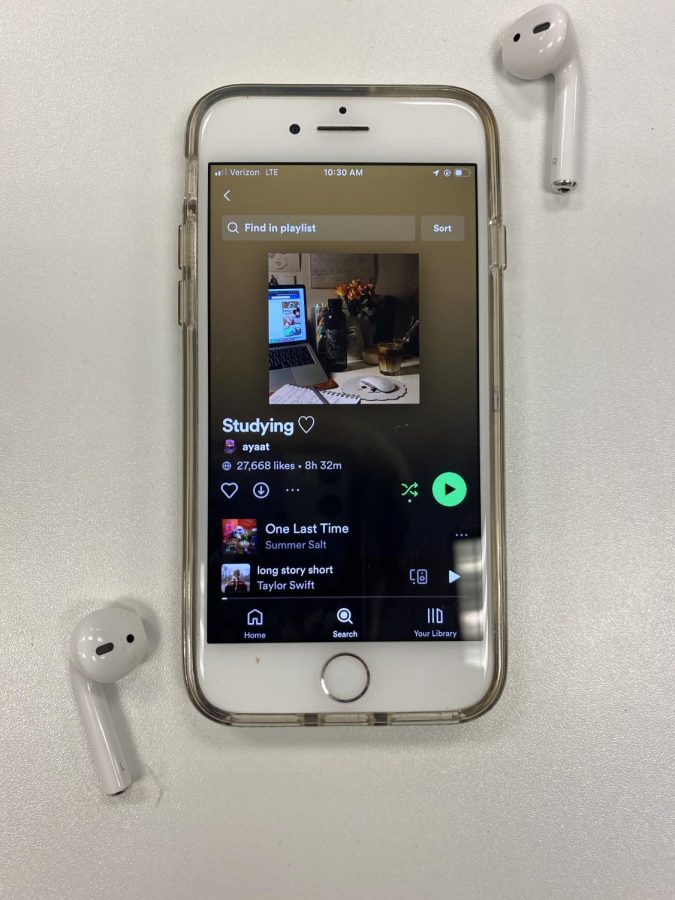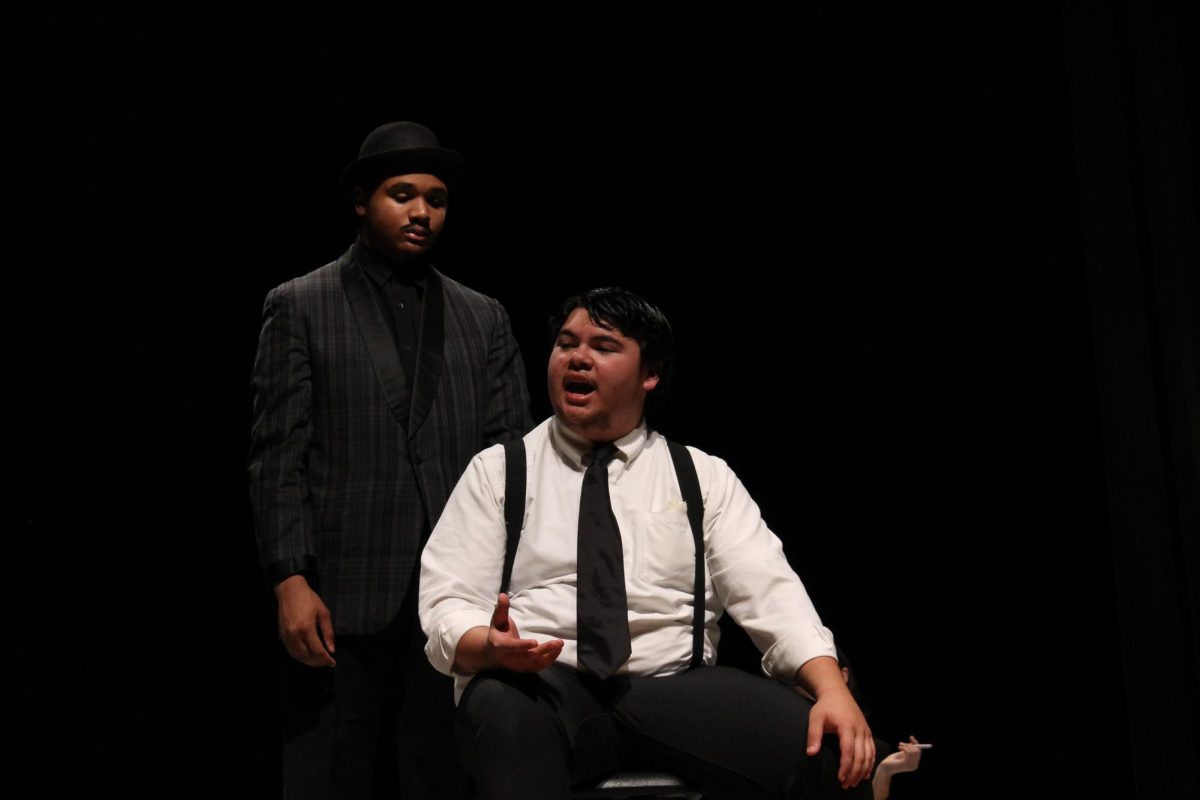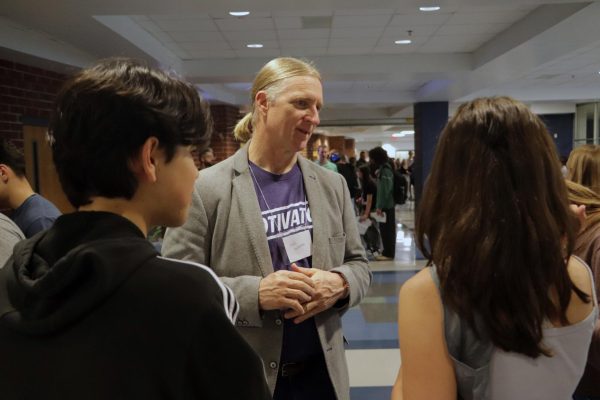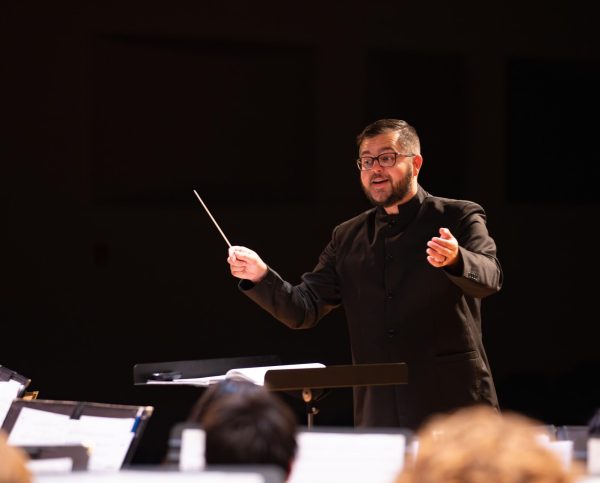Mackail oversees COVID-19 regulations in city schools
Screenshot of Harrisonburg High School website
Hand sanitizing stations are set up throughout schools to prevent the spread of COVID-19.
October 8, 2020
As the 2020 school year came to an end, Chief Operating Officer of Harrisonburg City Public Schools Craig Mackail was, as usual, focused on keeping students safe, from their bus rides in the morning to the minute they left the school building. Now, as the COVID-19 pandemic has kept the majority of kids from returning to school, keeping students safe means something entirely different for Mackail. His tasks previously ranged from overseeing transportation and nutrition to managing new projects of Harrisonburg City Public Schools. However, as soon as the pandemic hit, Mackail’s obligations quickly shifted.
“Since COVID-19 has started, basically I’ve done nothing but COVID-19 related things. I’m still doing my other duties, but I spend the majority of my time answering questions and dealing with COVID-19 issues,” Mackail said. “I was responsible for getting all the supplies and getting all our hand sanitizer stations set up.”
In addition to answering questions and providing guidance, Mackail is involved in the process of dealing with positive COVID-19 cases in the district. The process, while lengthy and complicated, is essential to ensuring the safety of staff and students in the building. To avoid positive cases at all, anyone entering a school building is screened twice. A temperature check and symptoms checklist must be completed once at home as well as upon arrival. Other precautions include mask wearing at all times, constant hand washing or sanitizing and disinfecting of surfaces. Although these safety measures are taken, there is a chance that a case is contracted where certain steps are followed.
“When someone calls us and says they have a positive test, the first thing we do is find out when they were symptomatic. In some cases, they haven’t exposed anybody because they haven’t been in the building, which is easy. In other cases, they have been in the building, and then we have to determine if exposure happened. Once we do that, then we alert those people that were potentially exposed, [and then] we recommend that they stay home for 14 days from exposure,” Mackail said.
With the help of the Centers for Disease Control and Prevention (CDC) and the Virginia Department of Health (VDH), Mackail and his team must determine whether a student or teacher was actually exp
osed.
“By CDC guidelines and [VDH] guidelines, an exposure is within six feet of someone masked or unmasked for a total of 15 minutes. Incidental contact, like when you walk past somebody in a hall, or not with
them for 15 minutes [is not an exposure]. [It’s also] cumulative, [for example], if you’re a teacher in a classroom and you’re positive, and you’ve been in the classroom with the kids all over the place, it could have been a cumulative 15 minutes,” Mackail said. “Of course [once someone has tested positive,] they’re not allowed [in the building]. As soon as they have a positive test, they’re home.”
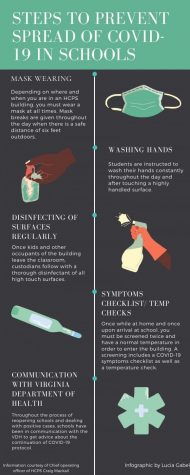
Recently, the administration was faced with the issue that they have been preparing for when someone tested positive in the building. After following the protocol and conferring with the Virginia Department of Health, Mackail and the rest of the administration took action.
“We shut down the high school for a day last week. The reason why we did was because we had to contact trace, which means we had to figure out who was exposed, and we weren’t comfortable leaving the building open until we knew that. When we can’t exactly put our fingers on who i
s exposed, we’d shut it for a longer period of time,” Mackail said.
Another aspect that Mackail works with is testing to try and help advise those who may have been exposed.
“The thing about a test, especially if you’re quarantined for 14 days, is that it gives you a snapshot of that day. You can get a test on day one or two during quarantine, but you still have 12 days left for you to develop symptoms,” Mackail said. “A lot of people say ‘oh my gosh, I’ve been exposed’ and run and get a test, and it comes back negative. Well, you may not have a viral load enough yet to have a positive test, or you may develop symptoms past that one day test. If I present with symptoms [like] a low grade fever [and] a sore throat and I go get tested and I am negative, then that’s a good test because you had symptoms.”
With COVID-19 comes confusion, which Mackail has seen in different ways.
“We had someone report symptoms [of a] really sore throat, headache and just [feeling] lousy so they went and got a test and it was negative. They got a strep test at the same time, and it was strep throat, so that’s the kind of stuff we’re dealing with,” Mackail said.
Not only does Mackail face issues with COVID-19 at work, but he also, like many people, deals with it in different aspects of his life.
“My wife has a condition, so she can’t get it [because] she’s medically fragile. So I have to be, not that I wasn’t anyway, but I have to be very very careful about how I go throughout my day. I wear a mask all the time, wash my hands all the time and I social distance all the time,” Mackail said.
As he goes throughout his work day, Mackail ensures that every step he takes he and his coworkers are cautious about their interactions. He feels grateful to be able to provide direction while staying safe.
“We’re having a lot of Zoom meetings. If we do have in person meetings, we’re making sure we’re over six feet apart and we have plexiglass shields at times. It really is encouraging, and I really do think the principals and the students in the buildings are doing a great job. They’re all wearing masks and are all staying six feet apart, and they’re all doing what they’re supposed to do, which is great,” Mackail said. “This has been a very busy time because we get a lot of questions all the time, which is fine because I can provide that guidance. People are frightened and honestly, it’s really, really serious.”
Like many other people, Mackail misses the commotion and interactions that came with everyday life and work.
“The thing that is just weird is walking into a building and only having less than 100 or 100 kids is just weird. I spend a lot of time out at the schools, and it’s just really strange,” Mackail said.
Mackail realizes the importance of connections with coworkers and how they were taken for granted before the start of the pandemic.
“I’ve missed the contacts. I come to the office every day, and I’ve been working in the office [ever since] we lifted the quarantine, but [I’m missing] the day-to-day contact. I don’t see people on a regular basis, like I used to. It takes a little more effort to get with people. It was just easier when you just walked down the hall. Everything that used to take one step now takes six,” Mackail said.
As online school continues, Mackail encourages students to stay optimistic.
“Just hang in there. We’re trying to get you all back. We’re working hard to do that. Unfortunately how the virus goes is that we can’t control it so we have to make decisions based on what’s going on in our community. As soon as we can safely bring everybody back or kids back, we’re going to do that, but we have to make sure we do it the right way and do it the safe way,” Mackail said.



